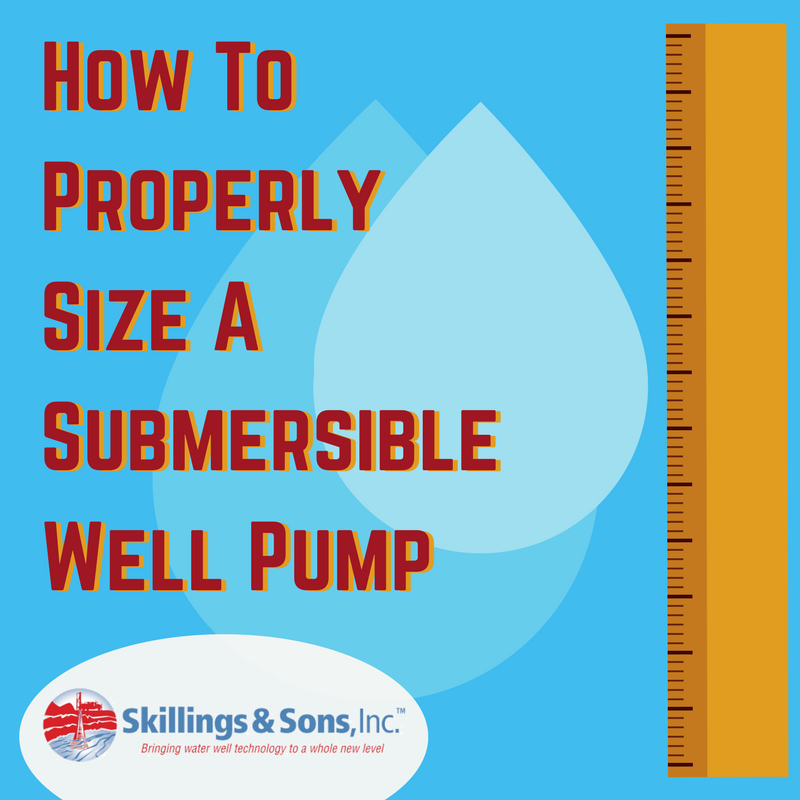What size submersible well pump do I need?
Here in New England, the majority of private wells use a submersible well pump to draw water into the home's water system. Properly sizing all of your water system's components is necessary to keep the system working properly and ensure the longevity of your well pump. A submersible well pump is a costly and critical component of your homes water system. It ensures the movement of water from the aquifer into your home. With an average size home, you should not need to replace your well pump for twelve or more years. Let's look at the elements that go into properly sizing a submersible well pump.
The Role Your Pump Plays In Your Water System
Construction of a residential water well typically consists of three steps. First, your well is drilled to a depth where water is found and to meet your local construction standards. Next, a trench is dug to pipe water from the wellhead into your home's water pressure tank, where it is stored until needed. Finally, a well pump is chosen and installed that will draw water from your well and deliver it to your home's pressure tank.
Sizing your well pump is a critical element in this entire process. Size is determined by looking at the yield of the well and the needs of the homeowner. As a general rule, you never want to install a pump that exceeds the capacity of your well.
The “pump” refers to both the physical pump as well as the electric motor that powers the unit. There are several different types of well pumps and the type and depth of your well will determine the proper pump type. Here in New England, most aquifers are deep underground and a submersible well pump is usually used.
Determining The Gallons Per Minute Needed
Your home's water use goes through cycles of high and low demand over the course of a day. The key to sizing a submersible well pump lies in figuring out the gallons per minute of water required during peak periods and sizing the pump to comfortably supply the proper amount of water needed during those times.
There are two methods of sizing a residential water pump that both give similar results.
Capacity Based on Fixtures
The capacity of your pump can be sized by counting the number of fixtures throughout your house and the number of GPM is equal to your final count. Make sure to include ALL fixtures including kitchen, bath, laundry room, appliances, outside fixtures and any special fixtures like a pool or hot tub. For example, if your home has two bathrooms (3 outlets each) kitchen sink, washing machine, dish washer, laundry tub, and two outside outlets, you would require a total of 12 GPM, based on the twelve fixtures in your home.
Capacity Based on Peak Demand
A second model using the same home as in the previous example calculates capacity based on a seven-minute peak demand. In most households, this period happens in the morning as the family prepares for the day. The seven-minute figure is the average high water use time for a shower or automatic washer. The average peak demand use for a 2 bathroom home is 98 gallons, this translates to 14 GPM to meet a peak demand of 98 gallons. You can source the GPM for various scenarios (2 bath, 3 baths, etc) online.
Well Capacity and Submersible Well Pump Size
You also need to take into account the rate at which water can be drawn from your well. If peak demand exceeds the maximum amount of water available, the pump must be sized to fit the well's capacity and the shortfall addressed through storage capacity.
Pressure Tanks
A large pressure tank can do this. In fact, a larger pressure tank can prolong the life of your pump by needing less frequent cycling to refill.If well capacity is too low, there are alternatives available such as a larger storage tank, a two pump system, or addressing the issue with a procedure like hydrofracturing. The best alternative is to speak with your well water professional if low water is an issue.
Water Pressure
Finally, you need to take water pressure needs into account when sizing your pump. Pressure must be sufficient to deliver water through your water system to the highest outlet and to properly meet the needs of modern appliances.
Sizing your submersible water pump is a critical element to an efficient well water system. While these methods can give you a good idea of your needs, the best solution is to speak with your well water professional to precisely determine your needs. Skillings and Sons have been providing water well drilling and well pump replacement advice and service to our clients throughout Massachusetts and New Hampshire area for years. If you have any questions about sizing your well pump, water treatment options or any other water related issues, give us a call. We love to help!

